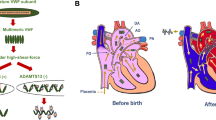Abstract—
Membrane microparticles (MP), produced upon cell activation and/or damage, exhibit coagulation activity, i.e. ability to accelerate blood clotting. They contain on their surface phosphatidylserine (PS), a substrate for assembling coagulation enzymatic complexes, and some of them tissue factor (TF), the initiator of clotting cascade reactions. In this study coagulation properties of MP derived from erythrocytes have been investigated. These MP were obtained from donor’s erythrocytes activated with ionophore A23187 as well as from outdated erythrocyte concentrates for transfusion. MP were counted by flow cytometry and their coagulation activity was examined by the modified plasma recalcification assay. Involvement of PS and TF in this reaction was assessed using PS blocker lactadherin and anti-TF antibodies. TF activity in MP was measured by its ability to activate factor X in the chromogenic assay. Size of MP was evaluated by dynamic light scattering. Properties of erythrocyte MP were compared with previously characterized (using the same methodological approaches) MP derived from platelets and monocytic THP-1 cells, lacking and containing TF, respectively. Erythrocyte MP accelerated plasma clotting, but less actively than MP from platelets and MP from THP-1 cells, which demonstrated maximal activity. Lactadherin completely inhibited coagulation activity of all MP. Anti-TF antibodies did not affect clotting parameters in the presence of platelet and erythrocyte MP, but slowed clotting in the presence of MP from THP-1 cells. In contrast to MP from THP-1 cells expressing active TF, the TF activity was not detected in erythrocyte and platelet MP. MP derived from erythrocytes were smaller than MP from platelets and THP-1 cells, with average diameter about 200 nm and 400 nm, respectively. Thus, MP from erythrocytes exhibit lower ability to accelerate plasma clotting in comparison with MP from platelet and THP-1 cells. The data obtained suggest that lower coagulation activity of erythrocyte MP in comparison with MP from THP-1 cells is due to the absence of TF in erythrocyte MP (in contrast to MP from THP-1 cells) and to their smaller size, and in comparison with MP from platelets (which as erythrocyte MP do not express TF) is due to their smaller size only.



Similar content being viewed by others
REFERENCES
Raposo, G. and Stoorvogel, W., J. Cell. Biol., 2013, vol. 200, pp. 373–383.
Lawson, C., Vicencio, J.M., Yellon, D.M., and Davidson, S.M., J. Endocrinol., 2016, vol. 228, pp. R57–R71.
Heijnen, H., Schiel, A., Fijnheer, R., Geuze, H., and Sixma, J., Blood, 1999, vol. 94, pp. 3791–3799.
Tripisciano, C., Weiss, R., Eichhorn, T., Spittler, A., Heuser, T., Fischer, M.B., and Weber, V., Sci. Rep., 2017, vol. 7, no. 1, 6522. https://doi.org/10.1038/s41598-017-03262-2
Skotland, T., Hessvik, N.P., Sandvig, K., and Llorente, A., J. Lipid Res., 2019, vol. 60, pp. 9–18.
Owens, A.P., 3rd and Mackman, N., Circ. Res., 2011, vol. 108, pp. 1284–1297.
Lacroix, R., Dubois, C., Leroyer, A.S., Sabatier, F., and Dignat-George, F., J. Thromb. Haemost., 2013, vol. 11, suppl. 1, pp. 24–35.
Mooberry, M.J. and Key, N.S., Cytometry A., 2016, vol. 89, pp. 111–122.
Khaspekova, S.G., Antonova, O.A., Shustova, O.N., Yakushkin, V.V., Golubeva, N.V., Titaeva, E.V., Dobrovolskii, A.B., and Mazurov, A.V., Biochemistry (Moscow), 2016, vol. 81, pp. 206–214.
Shustova, O.N., Antonova, O.A., Golubeva, N.V., Khaspekova, S.G., Yakushkin, V.V., Aksuk, S.A., Alchinova, I.B., Karganov, M.Y., and Mazurov, A.V., Blood Coagul. Fibrinolys., 2017, vol. 28, pp. 373–382.
Aleman, M.M., Gardiner, C., Harrison, P., and Wolberg, A.S., J. Thromb. Haemost., 2011, vol. 9, pp. 2251–2261.
Van Der Meijden, P.E., Van Schilfgaarde, M., Van Oerle, R., Renné, T., ten Cate, H., and Spronk, H.M., J. Thromb. Haemost., 2012, vol. 10, pp. 1355–1362.
Alchinova, I.B., Khaspekova, S.G., Golubeva, N.V., Shustova, O.N., Antonova, O.A., Karganov, M.Yu., and Masurov, A.V., Dokl. Biohys. Biochem., 2016, vol. 470, pp. 322–325.
Rubin, O., Delobel, J., Prudent, M., Lion, N., Kohl, K., Tucker, E.I., Tissot, J.-D., and Angelillo-Scherrer, A., Transfusion, 2013, vol. 53, pp. 1744–1754.
Allan, D., Thomas, P., and Limbrick, A.R., Biochem. J., 1980, vol. 188, pp. 881–887.
Salzer, U., Hinterdorfer, P., Hunger, U., Borken, C., and Prohaska, R., Blood, 2002, vol. 99, pp. 2569–2577.
Nguyen, D.B., Ly, T.B.T., Wesseling, M.C., Hittinger, M., Torge, A., Devitt, A., Perrie, Y., and Bernhardt, I., Cell Physiol. Biochem., 2016, vol. 38, pp. 1085–1099.
ACKNOWLEDGMENTS
The authors are grateful to M.A. Ovchinnikov (National Medical Research Center for Cardiology, Moscow, Russia) for providing TRAP and G.V. Shekhvatova (Institute of Protein, Pushchino, Russia) for providing CTI.
Funding
The work was supported by the Russian Foundation for Basic Research (project no. 17-04-00347).
Author information
Authors and Affiliations
Corresponding author
Ethics declarations
All donors gave voluntary informed consent to the use of their blood samples for research purposes. The study was approved by the Ethical Committee of the National Medical Research Center for Cardiology (Moscow, Russia).
Additional information
Translated by A.Medvedev
Rights and permissions
About this article
Cite this article
Antonova, O.A., Shustova, O.N., Golubeva, N.V. et al. Coagulation Properties of Erythrocyte Derived Membrane Microparticles. Biochem. Moscow Suppl. Ser. B 13, 237–243 (2019). https://doi.org/10.1134/S1990750819030028
Received:
Revised:
Accepted:
Published:
Issue Date:
DOI: https://doi.org/10.1134/S1990750819030028




